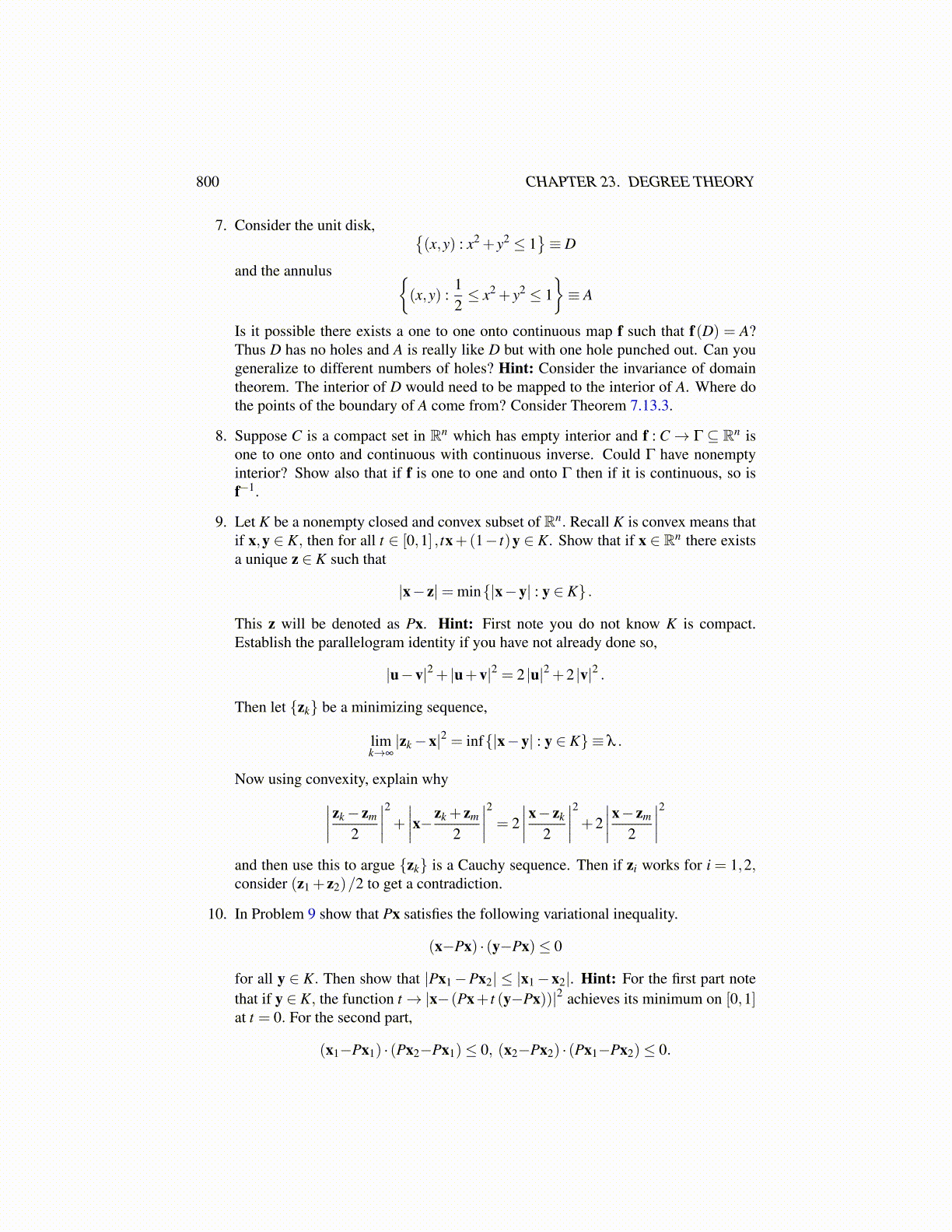
800 CHAPTER 23. DEGREE THEORY
5. Can there exists a one to one onto continuous map, f which takes the unit interval[0,1] to the unit disk B(0,1)? Hint: Think in terms of invariance of domain.
6. Let m < n and let Bm (0,r) be the ball in Rm and Bn (0,r) be the ball in Rn. Show thatthere is no one to one continuous map from Bm (0,r) to Bn (0,r). Hint: It is like theabove problem.
7. Consider the unit disk, {(x,y) : x2 + y2 ≤ 1
}≡ D
and the annulus {(x,y) :
12≤ x2 + y2 ≤ 1
}≡ A
Is it possible there exists a one to one onto continuous map f such that f(D) = A?Thus D has no holes and A is really like D but with one hole punched out. Can yougeneralize to different numbers of holes? Hint: Consider the invariance of domaintheorem. The interior of D would need to be mapped to the interior of A. Where dothe points of the boundary of A come from? Consider Theorem 7.13.3.
8. Suppose C is a compact set in Rn which has empty interior and f : C→ Γ ⊆ Rn isone to one onto and continuous with continuous inverse. Could Γ have nonemptyinterior? Show also that if f is one to one and onto Γ then if it is continuous, so isf−1.
9. Let K be a nonempty closed and convex subset of Rn. Recall K is convex means thatif x,y ∈ K, then for all t ∈ [0,1] , tx+(1− t)y ∈ K. Show that if x ∈ Rn there existsa unique z ∈ K such that
|x− z|= min{|x−y| : y ∈ K} .
This z will be denoted as Px. Hint: First note you do not know K is compact.Establish the parallelogram identity if you have not already done so,
|u−v|2 + |u+v|2 = 2 |u|2 +2 |v|2 .
Then let {zk} be a minimizing sequence,
limk→∞
|zk−x|2 = inf{|x−y| : y ∈ K} ≡ λ .
Now using convexity, explain why∣∣∣∣zk− zm
2
∣∣∣∣2 + ∣∣∣∣x−zk + zm
2
∣∣∣∣2 = 2∣∣∣∣x− zk
2
∣∣∣∣2 +2∣∣∣∣x− zm
2
∣∣∣∣2and then use this to argue {zk} is a Cauchy sequence. Then if zi works for i = 1,2,consider (z1 + z2)/2 to get a contradiction.